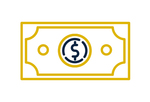Many future Domers are introduced to Notre Dame by family members, while watching college football on television or when the University is in the news.
Others learn about the place while crafting their lists of the schools they’d like to attend. For teenagers, it’s common to turn to college guidebooks and online rankings to compare various institutions.

Notre Dame usually hovers around 18th or 19th place among national universities in the U.S News & World Report annual accounting of the nation’s best colleges. Since that report first appeared in the mid-1980s, much critiqued by institutions but scrutinized by many prospective students and their parents, the University has placed as high as 15th. For 2022, Notre Dame was No. 19 again, just behind Cornell and Rice universities and ahead of UCLA, in rankings released in mid-September just before Notre Dame Magazine went to press.
College admissions officers pay particular attention to such appraisals. “We’ve created an academic culture that has earned us a place among the nation’s top 25 institutions of higher learning, according to surveys from U.S. News & World Report, Princeton Review, Time, Kiplinger’s Report, and others,” the University’s undergraduate admissions website declares.
We’ve taken a look at what recent guidebooks and online resources say about Notre Dame. How do they describe the University’s identity, academics and social life? How approachable do students find their professors? What financial aid is available, and how much debt is a student likely to accrue? And, according to these sources, how cold does it get during an Indiana winter?
Here’s what we learned:

IDENTITY
Religious faith, the gridiron and rigorous academics are still the trinity framing Notre Dame’s perception by outsiders. The word “Catholic” appears in the first sentence of most guidebook descriptions of the University. Student volunteerism and service learning also get frequent mention.
The University remains “the Holy Grail of higher education for many Roman Catholics,” reports the Fiske Guide to Colleges 2021, the best-selling college guidebook. “ND’s heartland location and 80-percent-Catholic enrollment makes it a bastion of solid education and equally solid values, religious and otherwise.
“ND’s personality is much closer to Boston College or Holy Cross than Georgetown. Only school ever ranked #1 in both football and graduation rates,” the review continues.
Fiske says Notre Dame takes pride in “fostering a culture that values open discussion of religious, spiritual and social issues — witness the willingness of its president to stick by a controversial decision in 2009 to award former president Barack Obama an honorary doctorate even though Obama does not share Catholic views on abortion.”
“Despite the university’s commitment to welcome students who are not Catholic, the Catholic ethos pervades life at Notre Dame, especially when it comes to dormitories,” says The Ultimate Guide to America’s Best Colleges 2021. That book and others point out the chapels in each campus residence hall and the regular availability of Masses.
In recent years, social media posts and online reviews have become part of the college evaluation process. The mostly anonymous comments about Notre Dame — posted at places like the U.S. News website, where reviewers give the University an aggregate rating of nearly five out of five check marks — tend to be avid endorsements.
“It is . . . the most Catholic place I have ever been (and I am writing from Rome, where I teach theology. So trust me on this one.) But it was a catholic Catholicism, not a rigid or oppressive kind. Open and universal. Not forced on anyone, but unmistakably ubiquitous,” one alumnus wrote.
“I’m not religious and I was scared I wouldn’t fit in here at ND because of that but I couldn’t have been more wrong. This place is home to the nicest and most welcoming people on earth,” wrote another.
A less favorable assessment listed Notre Dame’s weaknesses as lack of diversity, long, cold winters and weaker job recruiting than at comparable schools. “If you are not into dorm life (3 years required), this isn’t the place for you,” the reviewer wrote, referencing the single-sex residence halls.
ACADEMICS
“It is not easy to get into Notre Dame. To have a fighting chance to become one of the Fighting Irish you should be near the top of your high school class and earn between a 1390 and 1490 on the SAT or between 32 and 34 on the ACT,” America’s Best Colleges reports. (Because the coronavirus pandemic has canceled standardized tests in some regions, Notre Dame’s admissions process is test-optional at least through 2023.)
Several guidebooks point out Notre Dame’s attractive faculty-to-student ratio, its accessible professors, its abundance of undergraduate research and funded internship opportunities and the school’s strong alumni network. (Several guidebooks report a professor-student ratio of 10-to-1; the University says it’s 8-to-1.) The books also note that 94 percent of Notre Dame freshmen graduate within four years and 97 percent within six years.
Academic departments that get specific mention for their strength include English, theology, philosophy, physics, chemistry, chemical engineering, architecture and accountancy.
America’s Best Colleges highlights the Program of Liberal Studies, which focuses on Great Books. “Take note: the program publicizes that it offers ‘seminars and tutorials anchored in the Western and Catholic traditions,’ so avant-garde it is not.”
The 2020 edition of the Princeton Review’s The Complete Book of Colleges lists special academic facilities such as the Snite Museum of Art, the DeBartolo Performing Arts Center, the Stinson-Remick Hall of Engineering’s clean room, the LOBUND Laboratory for germ-free research and the Radiation Research Laboratory.
Some guides still refer to the strength of the University’s First Year of Studies program for academic standards and counseling, which was phased out in 2019. Students now have more flexibility to spread core courses throughout their undergraduate years, rather than taking as many as possible their freshman year.

SOCIAL LIFE
The guidebooks acknowledge the strength of Notre Dame’s residence-hall system, but suggest the lack of coed dorms is a drawback. “Parietal rules (midnight on weekdays, 2 a.m. on weekends) are still strictly enforced — and the subject of many student complaints,” Fiske says.
America’s Best Colleges offers a more sarcastic appraisal: “To help keep student morals sparkling clean, Notre Dame generously supervises gender mixing by enforcing ‘parietals,’ hours during which members of the opposite sex are permitted in individual dorm rooms. Students describe parietals as ‘restrictive’ and ‘the absolute worst thing about Notre Dame.’”
Traditions that get approving nods in print include hall dances, pep rallies, tailgating, football games, the annual Bookstore Basketball tournament, the Notre Dame Literary Festival and the An Tostal spring festival. The University also draws praise for its 350-plus student clubs and organizations, from theater groups and student publications to the marching band and Notre Dame Right to Life.
Student diversity is subject to stronger criticism. In U.S. News, Notre Dame rates 0.45 on an index of minority students ranging from 0 to 1, tying it with several other institutions including the Catholic University of America and the University of Colorado Boulder. Fiske reports Notre Dame’s demographics as 11 percent Hispanic and 4 percent each among African American, Asian American and “multiracial” students.
The admissions office continues to pursue increasing diversity. The University in August announced that 38.8 percent of the incoming Class of 2025 would be students of color and international students, making it Notre Dame’s most racially and ethnically diverse entering class. The breakdown among domestic students was 8.7 percent African American, 12.7 percent Hispanic/Latino; 0.6 percent Native American and 10.3 percent Asian/Hawaiian-Pacific Islander.
Economic diversity is another low mark in some guidebooks. According to U.S. News, based on 2018-19 data, just 11 percent of undergraduates receive federal Pell Grants for low-income students, tying Notre Dame with eight other national institutions that rank fifth from the bottom in that category. The admissions office says 14.3 percent of entering freshmen are Pell-eligible this year.

QUALITY OF LIFE
Notre Dame earns fewer stars in this category than comparable schools in most guides because of its Midwestern location, long winters and home base in South Bend. Colleges in or near large cities — and the plentiful cultural and entertainment offerings of those urban areas — receive higher marks. Several guides note Notre Dame is just 90 miles from Chicago.
“There is not much to do in South Bend, Indiana, although Notre Dame’s campus — with its abundance of greenery, lakes, and the striking Golden Dome — is a tourist attraction in and of itself,” America’s Best Colleges reports in a typical evaluation. The relatively recent construction of Eddy Street Commons provides “a more traditional college town area” nearby, the book says.
Fiske mentions Notre Dame’s recent $1.1 billion construction boom that added 20 campus buildings, noting especially the career center, dining facilities and massive rock-climbing wall inside the new Duncan Student Center adjacent to the football stadium.
Safety gets favorable marks for the University’s 24-hour campus police department, the fire department, controlled access to residence halls and a security escort service. When it comes to environmental responsibility and awareness, The Princeton Review scores Notre Dame 93 out of 100 based on data covering the University’s environmental policies, sustainability practices and students’ preparation for employment in a clean-energy economy.
America’s Best Colleges takes an outdated swipe at Notre Dame’s surrounding community. “South Bend . . . is anything but a cultural capital,” the book reports. Still, it is not bereft of activity, the guide admits, suggesting students might catch a show at the Morris Performing Arts Center or check out the College Football Hall of Fame. (The editors seem unaware that the museum closed in South Bend in 2012 and moved to Atlanta.)
“Notre Dame is a perfect fit for cream-of-the-crop devoutly Catholic students,” it continues. “Other students should consider that academics are taught in a highly religious atmosphere, and that there is minimal social life. The lackluster Midwestern location may also make it less attractive, despite the sterling academics.”

FINANCING
Colleges across the board are taking an increasingly businesslike approach to recruitment, treating students as customers to be lured and satisfied. That may have something to do with the average cost of attending a four-year U.S. institution rising by 497 percent between the 1985-86 and 2017-18 academic years, at more than twice the rate of inflation, according to Forbes magazine.
All the guidebooks mention Notre Dame’s relatively high price tag. For 2021-22, tuition, room, board and fees come to $78,347. But the books also note that, thanks largely to Notre Dame’s $13.3 billion endowment (as of summer 2020, the last figure available to the magazine at press time), admissions are need blind, and the University is committed to provide every qualifying student the means to attend via scholarships, loans and work-study arrangements.
Roughly 69 percent of undergraduates receive financial aid, the guidebooks say, and the typical graduate leaves with a degree and what Fiske deems “moderate average debt” ($24,000 to $29,000) relative to other schools. (Notre Dame says $21,758 is the average federal loan debt of graduates as of May 2021.)
The debt load isn’t quite modest enough for Notre Dame to land on Fiske’s top 10 “Best Buys” among private universities, which is based on the quality of academic offerings in relation to the cost of attendance. (Vanderbilt University, an institutional peer, is on that list.) However, Notre Dame places No. 26 among national universities on the U.S. News list of “Great Schools, Great Prices,” which calculates the average cost in 2019 for attendance after grants at $31,811. It lands at No. 71 among 75 universities for return on investment in The Princeton Review’s The Best Value Colleges. “Notre Dame, while certainly providing a wonderful academic environment and superb education, does reflect this in the cost of attending the college. . . . Fortunately, over 75 percent of undergrads receive some form of financial aid.”
Ultimately, deciding where to attend college is a deeply personal choice, one that can’t be determined by numbers, colorful brochures or anonymous online reviews. Guidebooks may introduce prospective students to institutions that weren’t already on their wishlists, but a visit to campus, meeting real students and a careful assessment of academic offerings, campus culture and financial aid options go furthest toward helping a student find the best fit.
Margaret Fosmoe is an associate editor of this magazine.